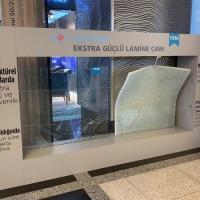Date: 31 October 2011
In this report NanoMarkets quantifies the opportunities for ultra-thin glass that is sufficiently flexible for use in roll-to-roll (R2R) manufacturing and in lightweight displays, as well as intrinsically flexible products such as rollable displays and conformable solar panels.
While the majority of revenues generated by flexible glass will come from sales into the display and solar industries, this report also looks at other applications including lighting and sensors. It also, examines how flexible glass will compete against plastics, sheet metal, metal foils and other flexible substrates. In addition, the report discusses the manufacturing challenges that still remain for flexible glass and the likely roadmap for this material as it enters the marketplace.
Among the firms and major research facilities that are discussed in this report are AGC (Asahi Glass), Corning, DuPont, DuPont Teijin Films, ITRI, Lawrence Berkley National Lab, LiSEC Nippon Glass, and Tokyo Electron Glass.
Additional details about the report are available at the NanoMarkets website at www.nanomarkets.net.
From the Report:
Flexible glass will be a great leap forward as enabling technology for roll-to-roll (R2R) fabrication of high-performance e-paper and OLED displays. It offers the high transparency, robustness and good barrier properties associated with glass, while at the same time providing lower manufacturing costs. The advantages of flexible glass as a substrate in R2R processes have recently been demonstrated in joint development work done by Corning and ITRI (Taiwan). R2R processing using flexible glass is also expected to drive flexible glass into the solar panel sector within the next couple of years.
Thin glass is an established way to reduce weight in glass products such as windows. Ultra-thin flexible glass will continue this tradition for mobile displays; where low weight for laptops, tablets and smartphones is a key marketing factor. Flexible glass will also have an important role in weight reduction for the solar panels, since here weight reduction avoids the need for special roofing support. While intrinsically flexible products such as rollable displays and comformable building-integrated photovoltaics (BIPV) panels offer good prospects for flexible glass, large sales of flexible glass for these products lie three to five years away.
Although the first flexible glass products are likely to be premium priced, but the price of this novel kind of glass will come down quickly, since the volume of glass used for a given area is less with flexible glass than with conventional glass. However, considerable manufacturing challenges remain for flexible glass itself. Firms marketing flexible glass will have to demonstrate sufficient mechanical reliability for R2R fabrication; flexible glass will have to offer high strength edges and surfaces as well as control of stresses during device manufacturing. End users will also have to be assured that patterning from a spooled glass substrate can be effectively achieved.
About NanoMarkets:
NanoMarkets tracks and analyzes emerging market opportunities in energy, electronics and other markets created by developments in advanced materials. The firm is a recognized leader in industry analysis and forecasts for the substrate and encapsulation business for displays, solar panels and lighting and has been covering these markets for more than four years.
Visit http://www.nanomarkets.net for a full listing of NanoMarkets' reports and other services.
SOURCE NanoMarkets
Back to top
RELATED LINKS
http://www.nanomarkets.net
















Add new comment